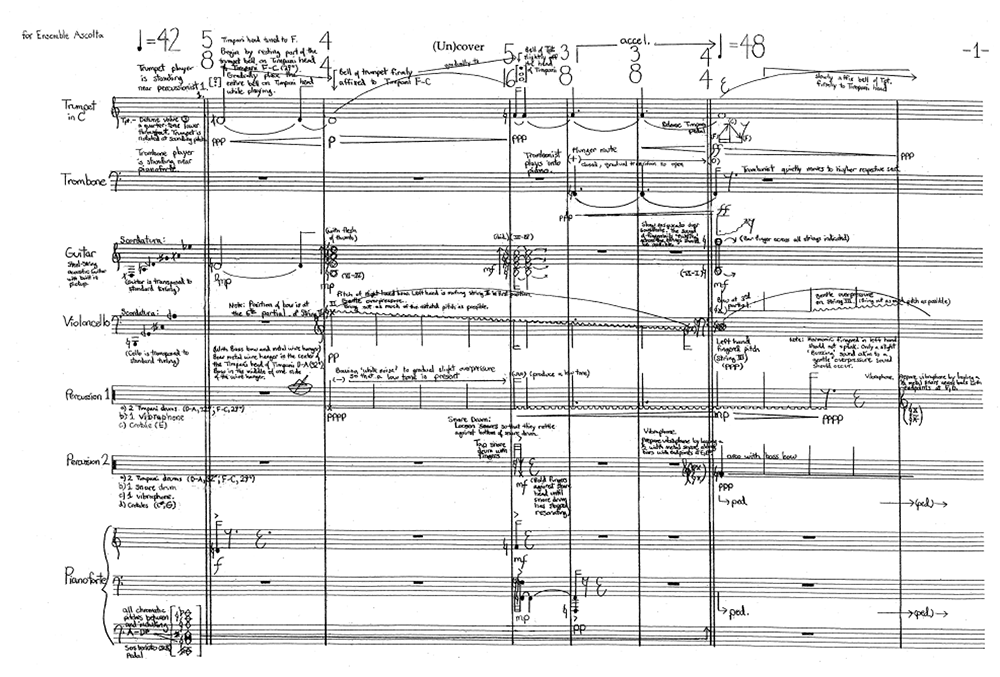Title: (Un)cover
Instrumentation: Trumpet, Trombone, Guitar, Piano, Violoncello and Percussion
Year: 2008
Duration: approx. 9 min.
Premiere: Donaueschinger Musiktage 2008
Performers: Ensemble Ascolta
Actioni contrariam semper et æqualem esse reactionem. To every action, there is an equal and opposite reaction. In (Un)cover, for every assertive declaration on the surface, there emerges or appears something that waits, but in this case, waits for an absence that may forever remain an absence. To understand the deflation and sinking at the end of the work, one must study the surface drama, its sources of inspiration, and the ambivalent and somewhat contradictory nature of each instance of repose as they appear intermittently throughout the piece.
It is not by coincidence that (Un)cover meditates on Beethoven’s Opus 111, the first movement and not the second. Tsao is able to then reference the more monumental, majestic C minor style and is associated pathos/angular histrionics as emulated by the powerful, punctuated gestures in his piece. Beethoven’s transcendent second movement (the Arietta and its variations) with its reconciliatory and redemptive sentiments is the absence (it never comes), as if “always to be absent,” that almost restless, nervous waiting for something that has also in many ways “always seemed absent”: the antecedent without its consequent. There is no third movement to Opus 111 for everything has been said. Tsao must exit before everything is said again, for it had already been said. There will be no scars on scars, no healing of history on the portion already healed. Apropos is the famous Chapter 8 of Thomas Mann’s novel Doktor Faustus (with the author’s apparent help from Adorno). The idea here revolves around the relationship between “late style” and the recovery of past music (another reason to reference the old masters). It is by no coincidence then, that (Un)cover can represent a “return” to music’s dramatic realm and traditional vocabularies after so much investigation into and exploration of the rarified (even musically negative, high noise-bearing) language of Tsao’s earlier work. Often, the most daring questions are not those that further one along a consistent line of engagement, but rather those that seemingly direct one in an alarmingly contradictory direction: like the massaging ruffles only won when one moves against the grain. But to every action, there is an equal and opposite reaction. There is no “late period” here yet (one can only conjecture what that would even be for Tsao), but an affinity to “late style,” an unsettled nervousness about the concept and its application as an aesthetic category that calls out to be addressed, to be allied to, to be complicit with. The energies that would drive the work toward reconciliation and redemption are weighed down by this restless repose and ultimately usurped by an almost explicitly undermining deflation and sinking that ends the piece, despite moments of delicate beauty and promise hitherto underrepresented in its explicitly musical garb in Tsao’s oeuvre. In some sense, to claim history is to board knowing the fate of the sinking ship. To insist on boarding is a position.
Steven Takasugi
Link: www.wisemusicclassical.com/work/69155/Uncover–Ming-Tsao/


